Can't use cashews in your dairy-free, vegan sauce recipe? Whether it's because you're allergic, looking for a cheaper option or don't have them on hand, I've got you covered with 15 of the best cashew substitutes!
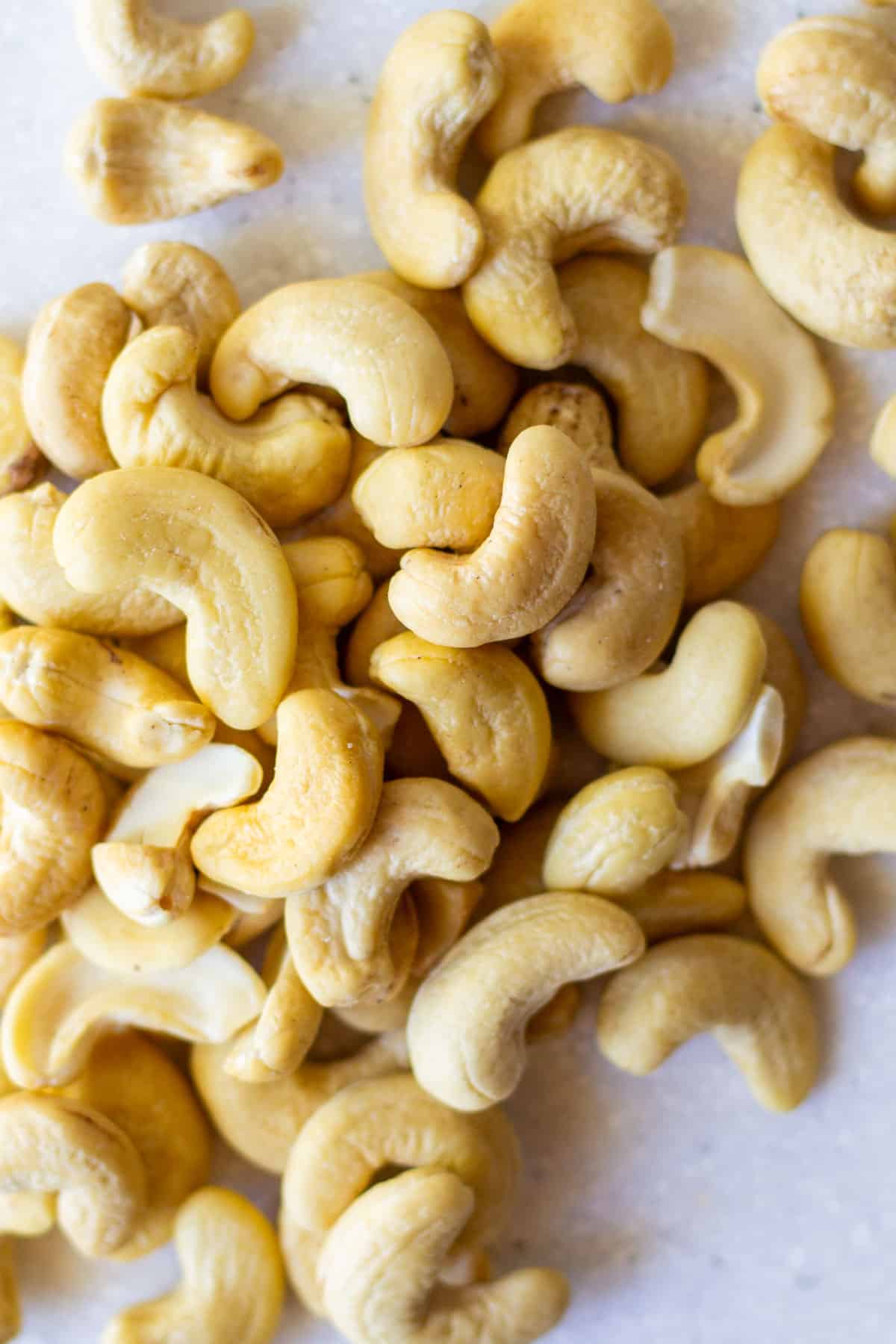
Want to save this post?
Enter your email below and get it sent straight to your inbox. Plus, I'll send you quick & simple plant-based recipes every week!
Oh, how I love cashews. 😍 They are my first choice for vegan sour cream, creamy sauces, vegan mayonnaise, crema, salad dressings and even desserts because of their creamy texture and mild nutty flavor.
Since going plant-based, cashew nuts blended with water are the very best tasting substitute for heavy cream that I've found. But, they are pricey and I seem to run through my bag pretty quick!
The best deal I can find on raw cashews is about $5 per pound, if I buy them in bulk at Costco, Amazon, or Restuarant Depot. If I buy them at a standard grocery store, they're closer to $7-11 per pound! 😫
So, it's great to have some alternatives to cashews when making creamy sauces, like vegan sour cream, creamy pasta sauces, and cream gravy purely for budgeting reasons. Some have a cashew allergy so have to avoid them. Still others are looking to make lower-calorie sauces.
Even if you still include some cashews in your sauce, using these substitutes can reduce the amount of cashews you have to use. You could use ¼ cup instead of a whole cup in the recipe if you replace that ¾ cup of cashews with one of these options in your blender.
Jump to:
- Reasons to substitute cashews in a recipe
- What to look for in a cashew substitute
- Best substitutes, tried and tested
- Silken tofu
- Boiled or steamed white russet potato, peeled
- Boiled or steamed cauliflower
- Raw sunflower seed kernels
- Blanched almond flour
- Prepared cashew cream
- Cashew powder
- Cashew milk + thickening agent
- Almond milk + thickening agent
- Soy milk + thickening agent
- Vegan cream cheese
- Vegan sour cream
- Macadamia nuts
- Almonds
- White flour
- More substitute ideas for cashews
- 💜 More recipes you'll love
- 💬 Reviews
Reasons to substitute cashews in a recipe
- Allergy - those with cashew or nut allergies must avoid consuming them
- Price - cashews are expensive in many areas of the world
- Calorie density - cashews are high in calories (560 calories per cup) and high in healthy fats (52g per cup), so a substitute that is lower in calories or fat will reduce the calorie density of your recipe
- Availability - if you don't have cashews on hand or can't find any
- Flavor - some people don't like the flavor of cashews for a certain recipe (or at all) so are looking for an alternative
What to look for in a cashew substitute
- Flavor - cashews have a mild, slightly sweet taste. This is one of the reasons why they are used so frequently in various savory and sweet cream sauces. So, look for an alternative that has a similarly mild and not overpowering flavor profile.
- Color - cashews are a creamy white color. So, they will not discolor sauces. Look for a neutral-colored substitute, especially if the finished sauce, dip, or cream you're making should be white, off-white or cream-colored.
- Richness - cashews are high in fat, so they are very rich in flavor. If you're looking for a substitute that has similar richness and fatty mouthfeel, then choose an alternative that is higher in fat.
- Thickness - cashews are often blended into sauces to help thicken them without the use of flour or powdered starches. So, if you're looking for a thickening agent in your sauce, choose an option that has less liquid.
- Nutrition - cashews are a whole plant food. They are not a highly processed food. Just one ounce of cashews contains 12g of fat, 9g carbohydrate, 5g protein, 0.9g dietary fiber as well as iron, vitamin B6, and magnesium.
- Cost - cashews are pricey. Here in Houston, Texas, they range in price from $5-11 per pound. They are even more expensive in other areas of the country and world. So, when looking for a substitute, consider the cost of the alternative and factor that in when making a decision.
Best substitutes, tried and tested
While they may be surprising, here are my TOP 5 cashew substitutes to use when making vegan, dairy-free, and whole-food plant-based creamy sauces.
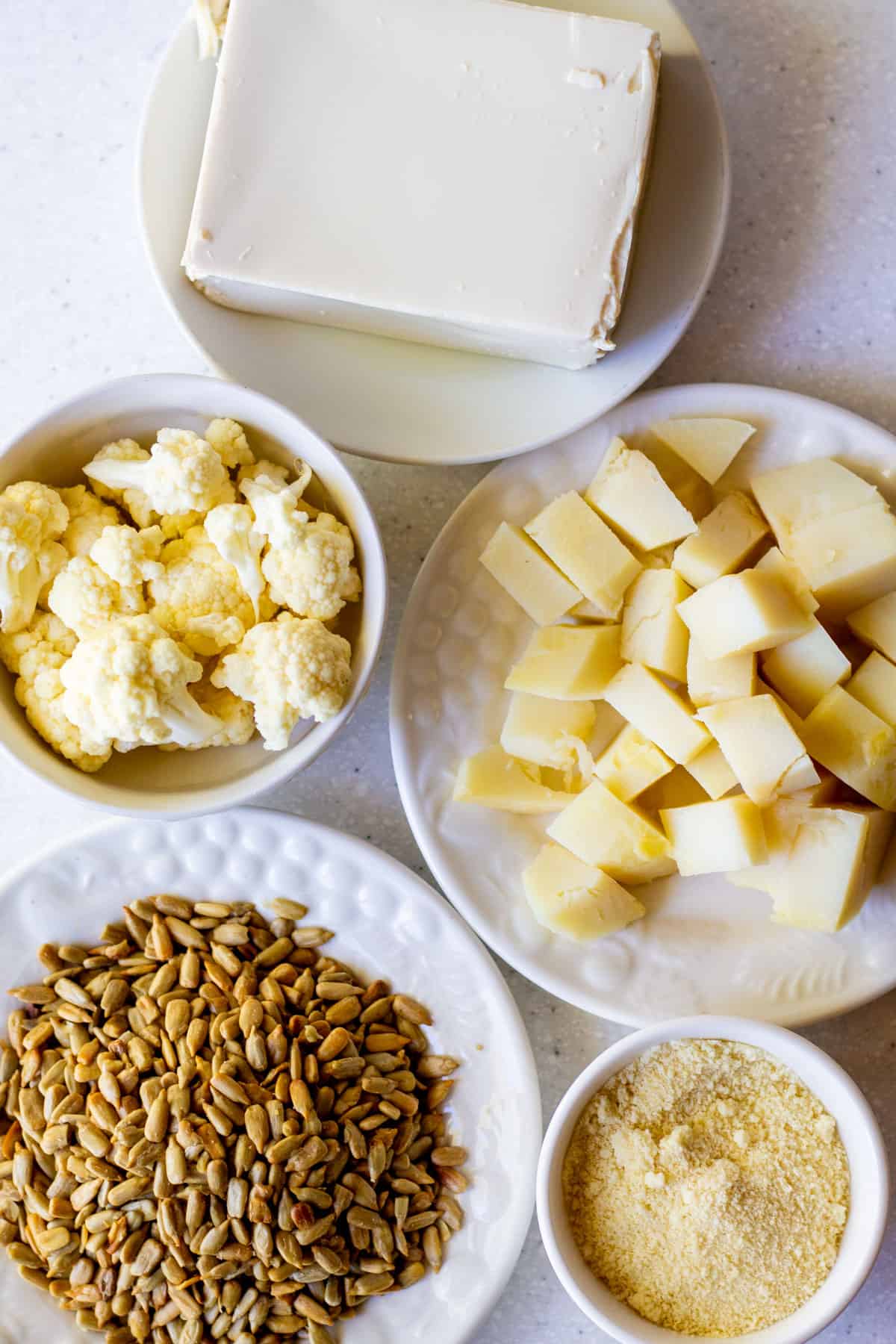
- Silken tofu
- Potato
- Cauliflower
- Raw sunflower seed kernels
- Blanched almond flour
Silken tofu
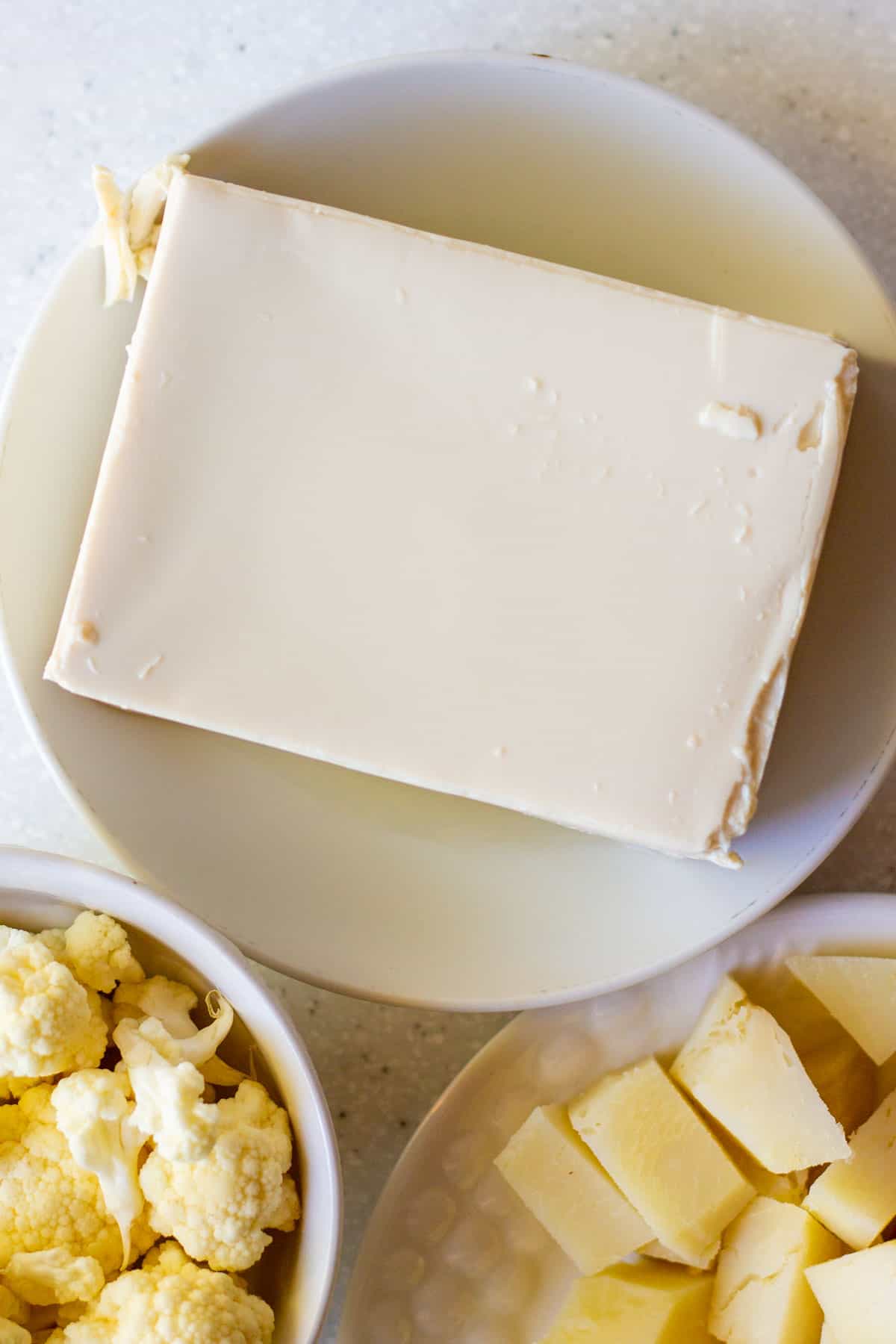
An incredible option for sweet and savory recipes, silken tofu can be blended into sour cream, creamy pumpkin pie, and pasta sauce - talk about versatility! Silken tofu is low in calories and high in protein, not to mention cancer-preventive.
Pros
- Creamy
- Thick
- Neutral flavor profile
- Low in calories (The entire 12-ounce box of Morinu Silken Tofu Lite contains 120 calories)
- High in protein (12-ounces contains 24g protein)
- Low fat varieties available
- Cancer-preventive
- No prep needed
- Shelf-stable container, lasts for months in pantry
Cons
- Sometimes hard to find
- Those allergic to soy cannot use it
👩🏻🍳 How to use silken tofu + expert tips
- Remove silken tofu from the box. Then, blend it up with seasonings of your choice into a smooth creamy sauce using a blender or food processor.
- Can be used in combination with other substitute options on this page, such as a small amount of cashews, cauliflower, potato, almond flour, etc.
- Silken tofu is very bland. You may have to increase the amount of spices, salt and other flavoring agents. Lemon juice and vinegar works well to brighten sauces with silken tofu. Use a touch of sugar to even out any hint of bitterness.
- Use 1:1 ratio when substituting for raw, unsoaked cashews, but reduce any water or plant-based milk being used by half, since the silken tofu has water in it.
How to open Morinu silken tofu packages
Morinu silken tofu can be a bit tricky to open when you first start using it. Here's how I do it.
Lift the two cardboard flaps on the end of the container. Cut the flaps off with scissors. Use scissors to cut along the dotted line. Open the end and drain away any water.
Then, carefully slide the silken tofu out of the container into your blender, food processor, or onto a plate. No pressing needed. In fact, if you press it, it will fall apart.
Recipes for vegan sauces that use silken tofu:
- Low Fat Chipotle Mayo
- Vegan "Miracle Whip" Mayo
- Vegan Silken Tofu Sour Cream
- Easy Vegan Pumpkin Pie with Silken Tofu
- Mini Vegan Pumpkin Pies - Single Serving Pumpkin Tarts
- Crustless Pumpkin Pie Ramekins with Leftover Filling (vegan)
Boiled or steamed white russet potato, peeled
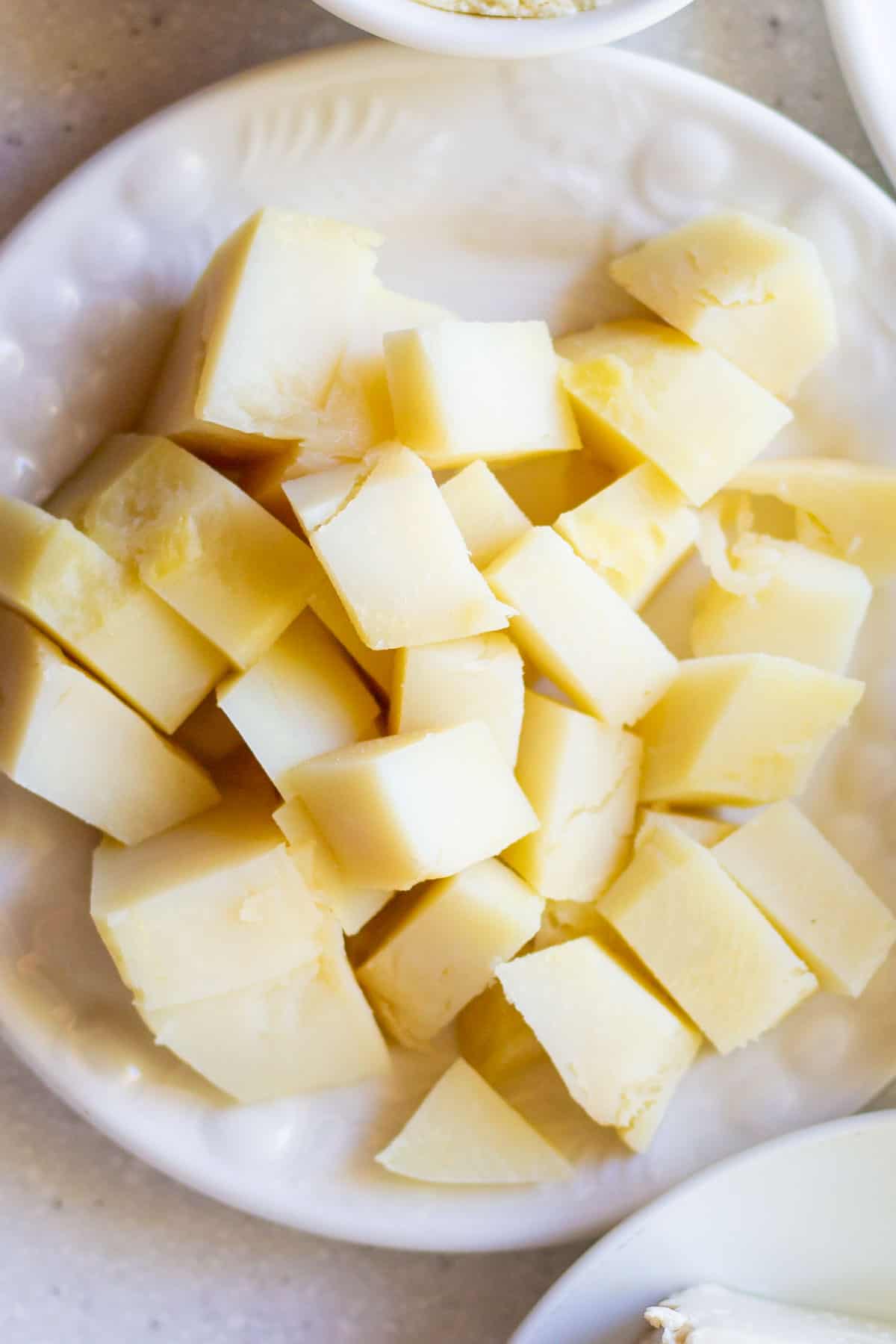
I've successfully used potato in sauces for years. It works really well in vegan cheese sauce, cream gravy, queso, and pasta sauce. The starch in potatoes gives sauces a thick, silky texture.
Pros
- Creamy
- Thick, silky texture when blended with plant-based milk into a sauce
- Mild flavor, tastes of potato, so best for savory
- Low in calories (200 calories per cup)
- Low in fat (4g fat per cup)
- Whole food, not highly processed
- Easy to find
Cons
- Must prep by peeling and boiling the potatoes first
- Can't be used for desserts
- Not great for cold sauces, best used for hot sauces (pasta sauce, queso, cream gravy, etc.)
👩🏻🍳 How to use boiled potato + expert tips
- Wash, peel and cut russet potatoes into large pieces about 1.5 inches wide. Boil in water under tender. Drain away the water. Blend up cooked potato with plant-based milk and seasonings of your choice into a sauce.
- Can be used in combination with other substitute options on this page, such as a small amount of cashews, cauliflower, silken tofu, almond flour, etc.
- You can use hot, freshly boiled, or steamed potato this way. Or, you can use cold cooked potato. You may have to increase the amount of liquid you use when blending cold potato, so start with a smaller amount and increase if it's too thick.
- Use 1:1 ratio when substituting for raw, unsoaked cashews
Recipes for vegan sauces that use boiled potato:
Boiled or steamed cauliflower
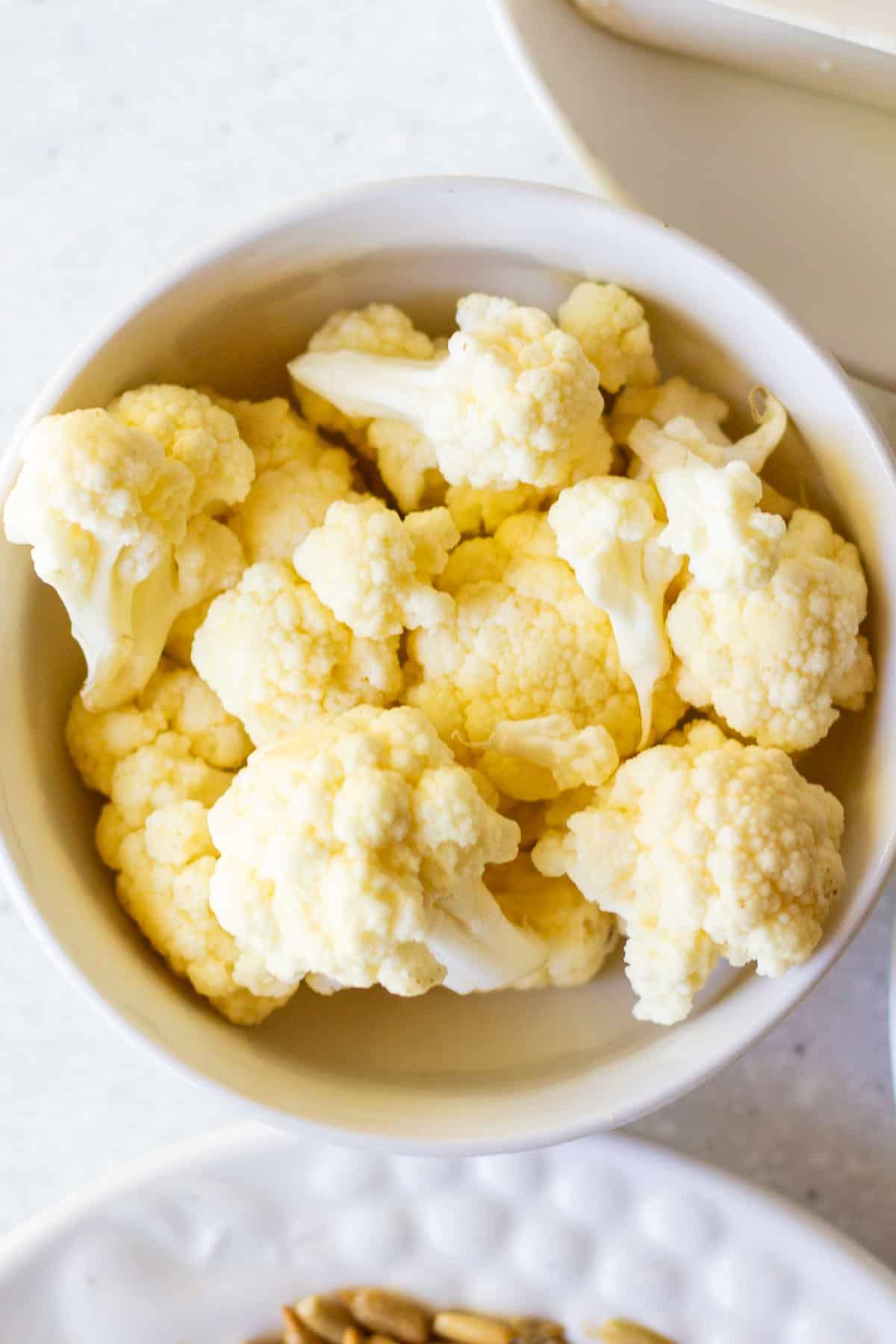
One of the first recipes published on my blog was for a creamy cauliflower alfredo sauce. This works very well and is the lowest-calorie option (28 calories per cup). It can be used in combination of any of these other ingredients to bring the calorie density of the sauce down.
Pros
- Creamy
- Low in calories (28 calories per cup)
- Low in fat (0.56g per cup)
- Whole food, not highly processed
- Easy to find
- Mild flavor, tastes faintly of cauliflower when made into a sauce, so best for savory
- Will lower the calorie density of your sauce when replacing nuts, seeds, flour or nut butters
- Can be used for either hot or cold savory recipes
- Can use frozen cauliflower, which cuts down on prep work
Cons
- Must prep by cutting, then boiling or steaming the cauliflower florets first
- Can't be used for desserts
- Not as rich or silky as other options, since it is very low in fat. Can be combined with richer options to combat this. Or, if you use oil in your cooking, oil can be added to make a cauliflower sauce taste rich.
👩🏻🍳 How to use boiled cauliflower + expert tips
- Wash cauliflower and remove outer leaves. Trim core and then cut or tear cauliflower into large florets. Boil cauliflower florets in water until fork tender. Drain away the water. Blend up cooked cauliflower with plant-based milk and seasonings of your choice into a sauce.
- Frozen cauliflower can be used instead of fresh.
- Can be used in combination with other substitute options on this page, such as a small amount of cashews, potato, silken tofu, almond flour, etc.
- Use 1:1 ratio when substituting for raw, unsoaked cashews
Recipes for vegan sauces that use boiled cauliflower:
- Vegan No Oil Creamy Cauliflower Alfredo Sauce
- Conchiglie Pasta in Cauliflower Béchamel Sauce with Kale and Corn
- Vegan Creamy Mushroom and Asparagus Gigli Pasta
- Gigli Pasta with Broccoli and Vegan White Sauce
Raw sunflower seed kernels
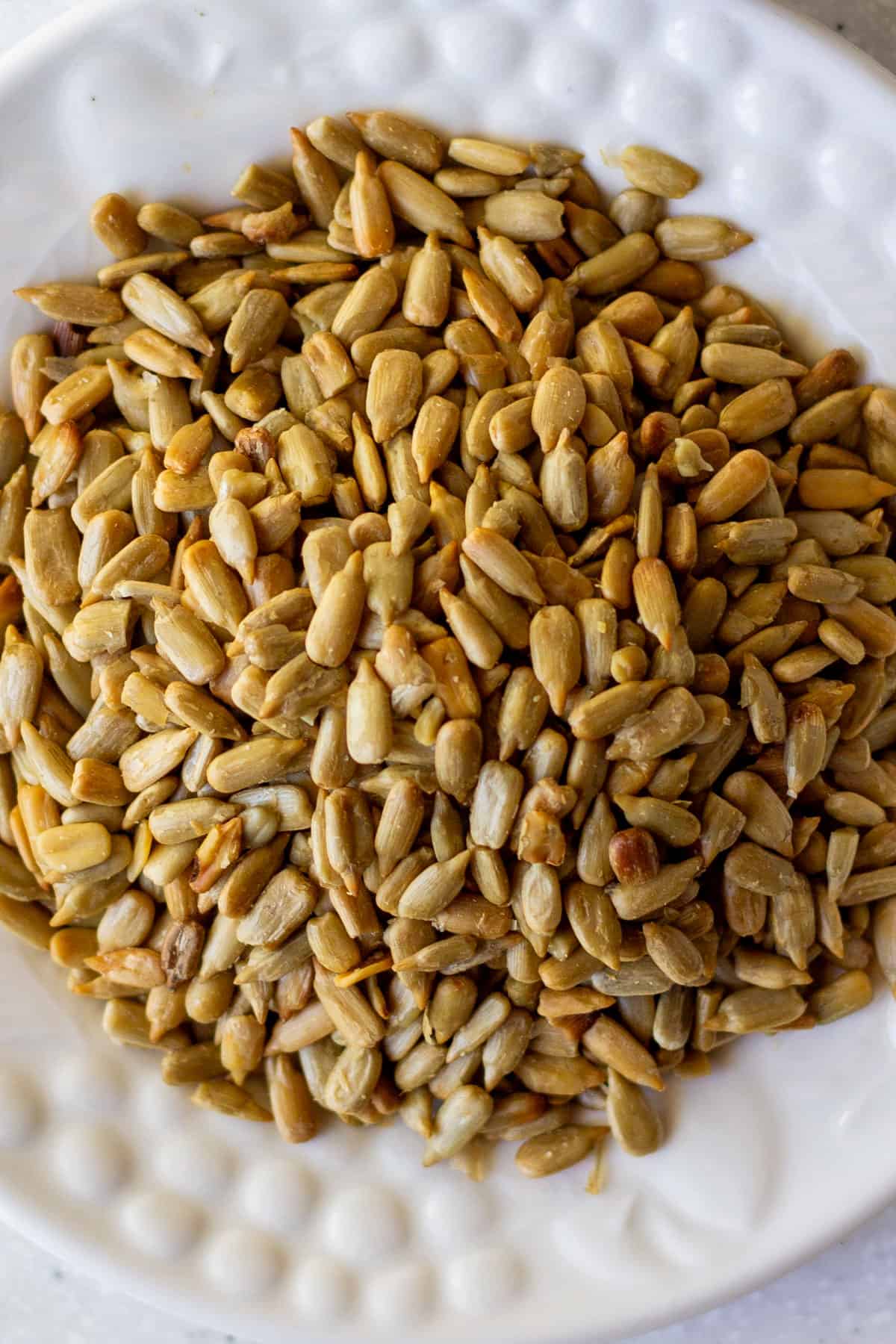
Since they have a stronger flavor than cashews, raw sunflower seed kernels work best in sauces that have strong flavors, such as chipotle sauce. Or, try making nut-free sour cream with them.
Pros
- Creamy
- Much cheaper than cashews
- Thick, silky texture when blended with plant-based milk into a sauce
- High in fat, (72g per cup) so has a rich mouthfeel like cashews
- Whole food, not highly processed
- Easy to find
- No prep needed
- Can be used for cold or hot sauces
Cons
- High in calories (818 calories per cup)
- Stronger flavor than cashews, so they work best in sauces with even stronger flavors
- Can sometimes make a sauce feel chalky in the mouth
👩🏻🍳 How to use sunflower seeds + expert tips
- Using a high speed blender like the Blendtec I use, I do not soak my sunflower seed kernels. I just blend them up with water or plant-based milk and seasonings of my choice into a sauce.
- If you have a less powerful blender, you can soak the sunflower seeds for 20 minutes to soften them. Drain the water and rinse before using.
- To benefit from the richness of sunflower seeds, but combat some of the flavor and texture cons, I often mix these with other substitutes, such as silken tofu, potato, or cauliflower to mellow them out.
- Use 1:1 ratio when substituting for raw, unsoaked cashews
Recipes for vegan sauces that use sunflower seeds:
Blanched almond flour
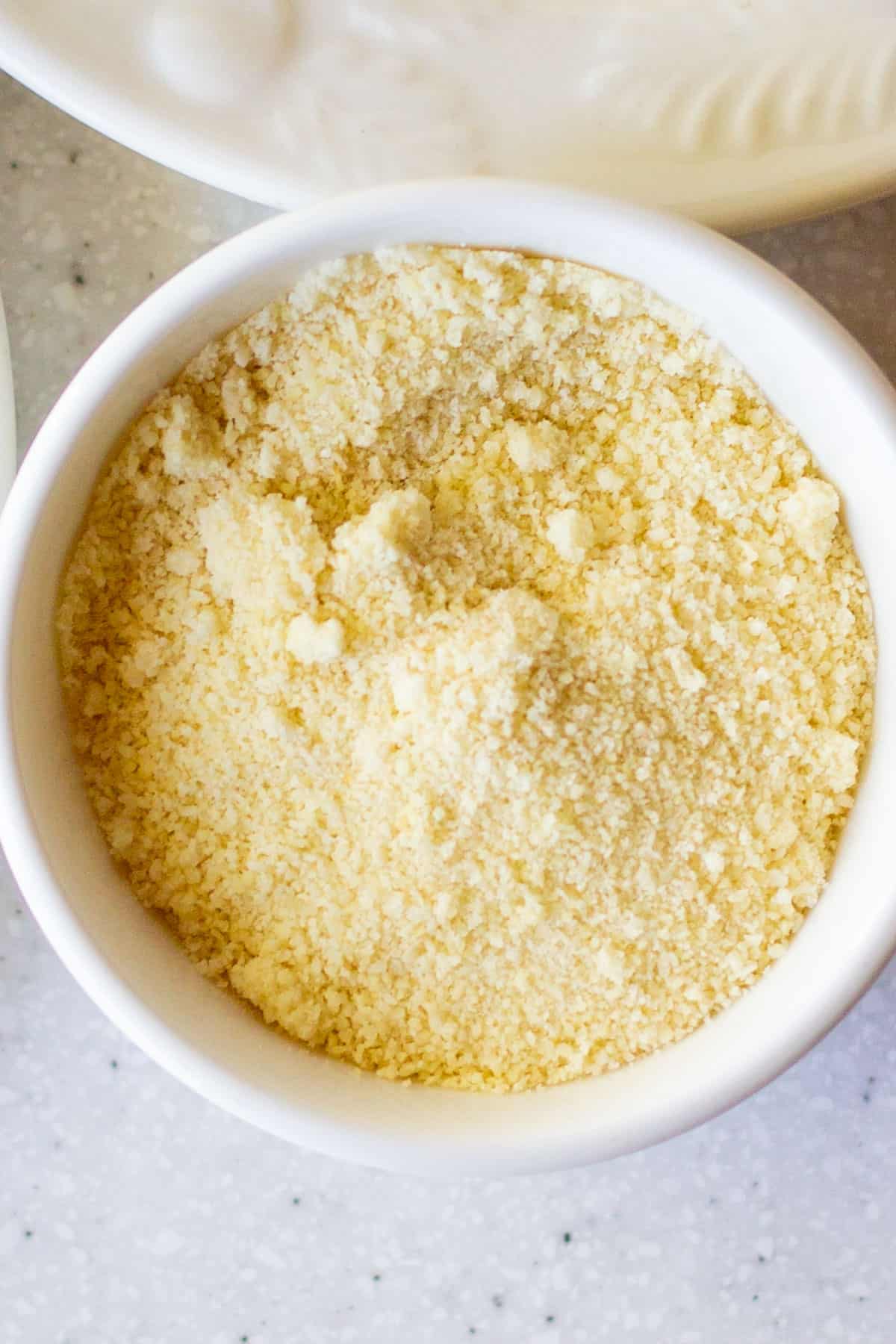
Used as the main ingredient of my vegan parmesan, it also works great in sauce! If you need a little bit of richness in a sauce or gravy, add a tablespoon of blanched almond flour in the blender or food processor. It has a little bit of fat and will blend into the sauce much easier, without the need to soak large nuts or seeds. This is a great option to add if you use one of the lower-calorie options above, such as silken tofu, cauliflower, or potato.
Pros
- Creamy
- Thick, silky texture when blended with plant-based milk into a sauce
- High in fat, (60g per cup) so has a rich mouthfeel like cashews
- Easy to find
- No prep or soaking needed
- Stores for a long time in the refrigerator or freezer
- Can be used for cold or hot sauces
Cons
- Not for those with a nut or almond allergy
- Expensive when using large amounts of it
- High in calories (720 calories per cup)
👩🏻🍳 How to use blanched almond flour + expert tips
- Blend or process the blanched almond flour with water or plant-based milk, other ingredients, and seasonings of my choice into a sauce.
- Best used combined with other substitutes, such as silken tofu, potato, or cauliflower to add richness.
- Use 2 tablespoons almond flour for richness combined with 1 cup of another lower calorie substitute like potato, cauliflower or silken tofu when substituting for 1 cup of cashews
Those are my TOP 5 alternatives that I use again and again. Below are 9 additional options that I have personally tested in my cooking. While they tick less boxes as a cashew substitute, they work in a pinch!
Prepared cashew cream
This is still cashews, so would only work if you don't have raw whole cashews on hand, but need something to thicken a creamy sauce. Cashew cream is freezable, too. So, having some in the freezer can be helpful.
Cashew powder
This is still cashews, but is de-fatted cashew powder. Mixed with water, it is a cashew butter substitute. Similar to PB2 or PBFit, which is defatted peanut butter, cashew powder has less calories and fat than whole cashews. It is a highly processed product and is not suitable to those with nut or cashew allergies.
Cashew milk + thickening agent
Cashew milk is cashews that have been thinned with water and often additional ingredients are added to stabilize the milk. This works well for the creaminess needed in a cream sauce and has a bit of cashew flavor, but is very thin. So, you would need to combine it with something thick like silken tofu, potato, cauliflower, sunflower seeds, almond flour, etc.
Look for a cashew milk that is unsweetened and unflavored, with the least amount of ingredients.
Almond milk + thickening agent
Almond milk is almonds that have been thinned with water and often additional ingredients are added to stabilize the milk. This works well for the creaminess needed in a cream sauce, but is very thin. So, you would need to combine it with something thick like silken tofu, potato, cauliflower, sunflower seeds or blanched almond flour to create a thick sauce.
Look for an almond milk that is unsweetened and unflavored, with the least amount of ingredients.
Soy milk + thickening agent
Soy milk is soy beans that have been thinned with water and sometimes additional ingredients are added to stabilize the milk. This works well for the creaminess needed in a cream sauce, but is thin. So, you would need to combine it with something thick like silken tofu, potato, cauliflower, sunflower seeds or almond flour to create a thick sauce.
Look for a soy milk that is unsweetened and unflavored, with the least amount of ingredients. I recommend Trader Joe's shelf-stable soy milk and WestLife shelf-stable soy milk, both of which are organic, boasting only two ingredients: organic soy beans and water.
Vegan cream cheese
Store-bought or homemade vegan cream cheese can be used as a base to create a thick creamy vegan sauce. A plain dairy-free cream cheese would work best, such as Tofutti or Trader Joe's brand.
Store-bought varieties are highly processed and may contain ingredients that you'd rather not consume. But, this can work well in a pinch, especially for pasta sauce, dressings or dips.
Whisk the cream cheese into the remaining ingredients in a pan for a hot sauce. Or, use a food processor for a cold dip.
Vegan sour cream
Store-bought or homemade vegan sour cream can be used as a base to create a thick creamy vegan sauce. A plain dairy-free sour cream would work best, such as Tofutti or Forager brand.
Store-bought varieties are highly processed and may contain ingredients that you'd rather not consume. But, this can work well in a pinch, especially for pasta sauce, dressings or dips.
Macadamia nuts
Macadamia nuts are light in color, high in calories and fat with a rich mouthfeel, so they are a good substitute for cashews. The flavor is stronger, though.
Almonds
Almonds are very hard and dense, so can be difficult to blend up, even with a high-powered blender. Also, they must be boiled and then peeled to remove the outer brown skin if you want a creamy sauce.
But, they have a mild, bland flavor base to work from and are high in calories and fat, so have the same mouthfeel as cashews.
White flour
White flour can be used to thicken sauces, but it is high in calories and can be finicky to get right, especially if you're avoiding overt fats, such as oils and butters in your cooking.
More substitute ideas for cashews
- White cannellini beans - can make sauces gritty if not blended very well or if the beans are not cooked enough first
- Plain dairy-free yogurt - sour, tart taste and best for cold sauces, dips and dressings
- Vegan mayo - flavor may not work with the sauce you're making. Best for dips.
- Nuts and seeds
- Pine nuts
- Brazil nuts
- Sesame seeds
- Pumpkin seeds
- Hemp hearts
- Peanuts
- Pecans
- Walnuts
- Nut and seed butters
- Cashew butter
- Almond butter
- Sunflower seed butter
- Tahini (sesame seed butter)
- Walnut butter
- Peanut butter
- Pumpkin seed butter
- Pecan butter
- Nut pastes
- Hazelnut paste
- Almond paste
Teaching people how to cook more intuitively (instead of being dependent on recipes) is one of my favorite ways to help! It expands your cooking ability and confidence in the kitchen.
I hope this lesson in substitutes for cashews in creamy vegan sauces was helpful and inspired you to try something a little different next time you're in the kitchen.

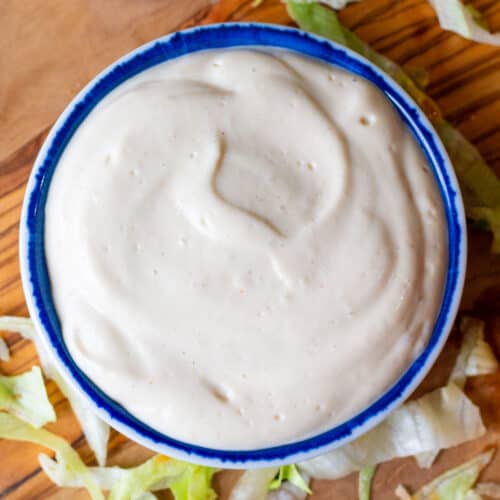
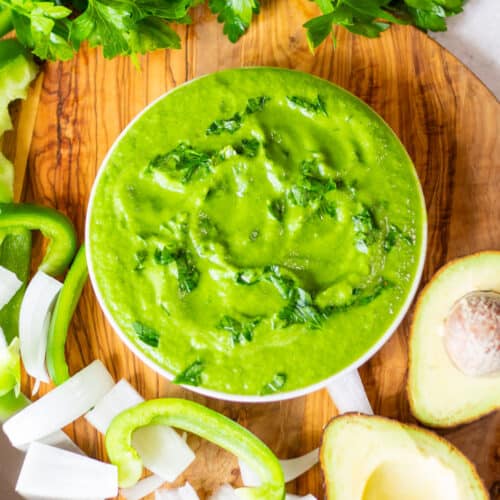
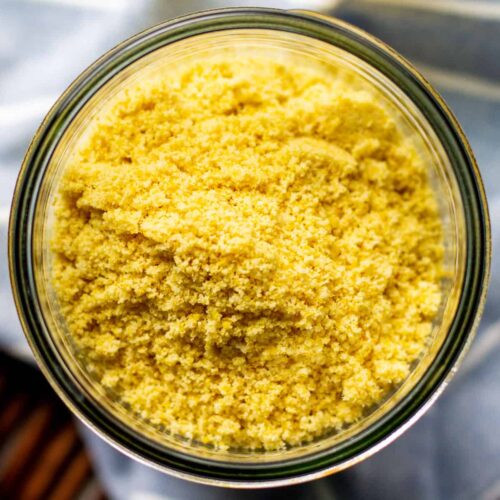





Comments
No Comments